Antal Ligeti, born Antal Hekler on 10 January 1823 in Nagykároly (Carei, Romania). He worked as a blacksmith's apprentice in Kolozsvár (Cluj-Napoca, Romania) from 1836, but even then he drew and read a lot, and in 1845 he decided to set off on foot to Italy, where, according to his reading, he could find the most picturesque landscapes. After deciding that he would choose a career in art instead of commerce, he applied to the Munich Academy and continued his studies there, and in Italy, he studied with Károly Markó Sr., one of the most important representatives of Hungarian landscape painting, who had a great influence on the development of his taste - József Szinyei wrote about him in 1900 in the 7th volume of the Lives and Works of Hungarian Writers.
Portrait of Antal Ligeti in the 12 January 1890 issue of Vasárnapi Ujság
When he returned to Hungary in 1850, he worked as a portrait painter in Sopron to earn a living, but he much preferred to draw or paint landscapes. Count István Károlyi recognised his talent, took him under his patronage and employed him as a painter in his castle in Fót. The count also allowed him to tour Egypt, Palestine and Lebanon. His travels in the East provided the subject of many of his later paintings. The woodcut illustrations of landscapes were also published in the newspapers Hölgyfutár, Külföld and Hazánk.
He regularly participated in the exhibitions of the Pest Art Society with his paintings. In 1852, he presented his pictures with exotic themes at an exhibition held in the National Museum's hall, and then, experiencing the aversion of the Pest audience to foreign landscapes, in 1853 he presented his pictures of Hungarian landscapes in the rooms of the Diana bath, for example, his painting called The Buda-Pest Skyline, Painted From the Buda Grapevine Hills.
Antal Ligeti's painting Buda and Pest Skyline From Ferencváros (1866). The master immortalised different parts of the capital several times (Source: György Rózsa: The Most Beautiful Skylines of Budapest, 1995)
On 1 July 1860, Vasárnapi Ujság reported the news that the famous painter married the daughter of Count Károlyi's accountant from Fót, Laura Zsolnay, with whom he left the Fót castle in 1861 and settled in Pest. Even then, he actively participated in the artistic life of Pest, he was a founding member of the National Hungarian Fine Arts Society, and he participated in numerous foreign and domestic exhibitions.
In the mid-1860s, he received a great opportunity: to create four paintings for the weekly meeting room (now the Reading Room) in the headquarters of the Hungarian Academy of Sciences. The paintings depict the castles of Szigliget, Szepes, Trencsén and Hricsó. The production of the pictures was continuously monitored by the press and regularly informed about the creation process. In terms of their artistic quality, the paintings are considered among the main works of the master in the literature.

The building of the Hungarian Academy of Sciences, where the pictures of Antal Ligeti can also be found. The recording was made around 1865 (Source: FSZEK Budapest Collection)
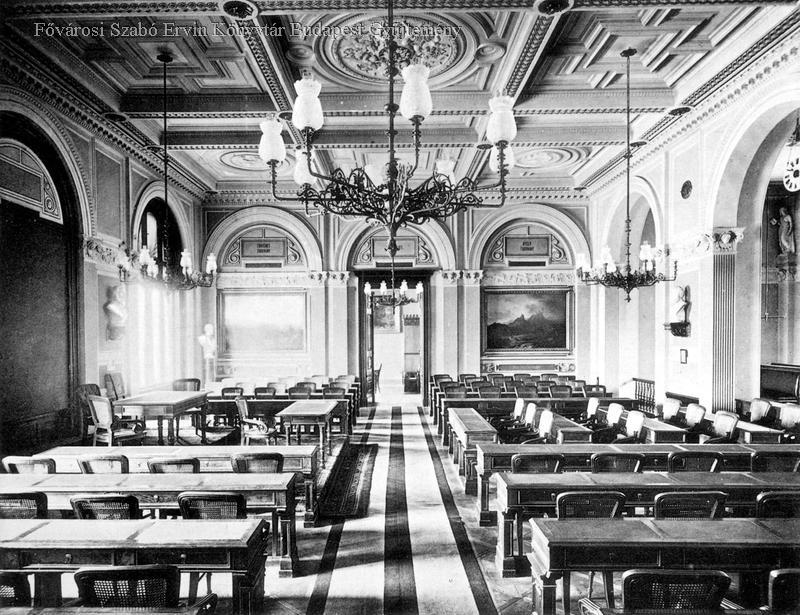
The weekly meeting room of the Hungarian Academy of Sciences (today's Reading Room) on the recording of Mór Erdelyi. Opposite on the wall are two pictures by Ligeti (Source: FSZEK Budapest Collection)
After the death of the painter Bálint Kiss, Ligeti had the honour of being appointed keeper of the National Museum's picture gallery. He held this extremely prestigious position from 1868 until his death. He had to perform many tasks: he dealt with inventory, collection, restoration and organisation.
"He reorganised the gallery, which it really needed. He completely transformed, cleaned his paintings of dubious names, professionally classified them, and when the old paintings were transferred to the national gallery, the formation of a modern gallery began in the national museum, which has since developed greatly."
- wrote Vasárnapi Ujság on 12 January 1890.
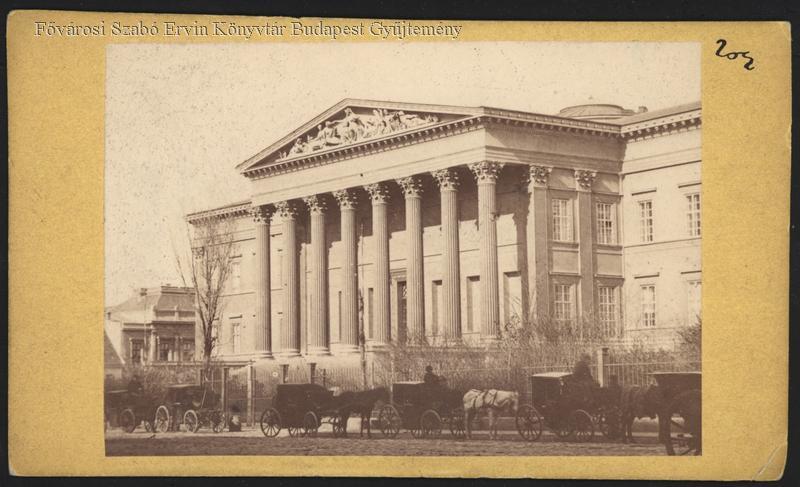
The building of the Hungarian National Museum, recorded in the 1870s, during Ligeti's time. The painter lived here between 1868 and 1890 (Source: FSZEK Budapest Collection)
As the keeper of the picture gallery, they provided him with an apartment in the museum building designed by Mihály Pollack. The excellent art historian Anna Zádor, in her 1960 monograph on Mihály Pollack also discusses the original layout of the building at length, according to which the apartments and study rooms were located on the ground floor, and the exhibition spaces were located on the first and second floors.
On 13 January 1876, an employee of Fővárosi Lapok visited Ligeti in his museum study. They did not attach a recording but briefly described what the office looked like.
"His study is as modest as the artist himself - but his beautiful library and rich collection of drawings amply compensate for the missing details. He also currently has a larger work on his easel (a landscape from Palestine), which, with its softness and warmth of colour, makes one feel drawn to the East."
A photograph taken of the staircase of the National Museum, published in 1955 in the 3-5 issue of Magyar Építőművészet
Ligeti also helped the advancement of young talents. The art gallery provided the opportunity for novice young painters to copy pieces from the collection, and they could only do so under the supervision of the art gallery keeper. In this way, Ligeti met many enthusiastic young people and offered help to the most promising ones. He encouraged artists who later became famous to take up painting, such as Géza Mészöly, who was studying law at that time, but the artistic career of Mihály Munkácsy also took off thanks to Ligeti's benevolent patronage.
"Lovers of art, novice painters, who could still become something, visited the gallery a lot, partly to earn money by copying. Ligeti's study room was a real small master's school; the master looked after everyone, encouraged them, gave him good advice"
- wrote Ország-Világ on 11 January 1890.
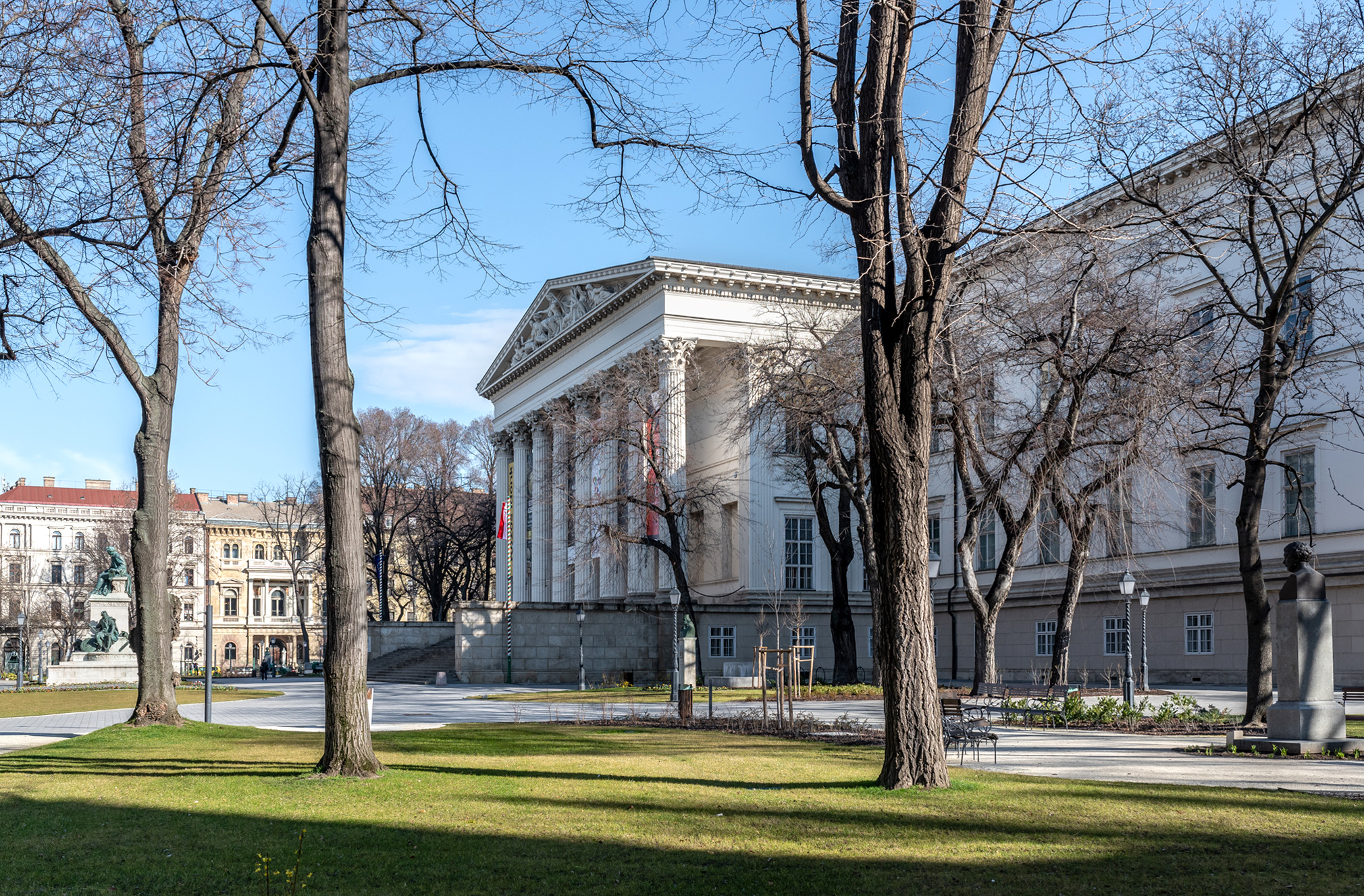
The building of the National Museum nowadays (Photo: Balázs Both/pestbuda.hu)
In recognition of his expertise, from 1880 until the day of his death, he became the keeper of the National Gallery established on the third floor of the Hungarian Academy of Sciences. Together with Károly Pulszky, they organised and supervised the collection. To mark the opening, the third floor was renovated and rearranged to make it suitable for displaying the collection.
"The premises of the gallery have been completely renovated. In some places, small folding screens were erected in the window spaces, and the most precious paintings hang on them in full light."
- wrote the Vasárnapi Ujság on 8 May 1881.
However, during his enthusiastic work for art, he did not forget to paint. In addition to the four paintings at the Academy, his best-known works are The Island of Capri, The Ruin of the Füzér Castle, Oasis in the Desert and Taormina, but he also immortalised the capital several times during his career. These include the already mentioned The Buda-Pest Skyline, Painted From the Buda Grapevine Hills, Buda and Pest Skyline From Ferencváros, Pest-Buda Skyline From Rózsadomb and the Pest City Park, and in 1885 he participated in a competition issued by the capital with his painting The Skyline of Budapest.
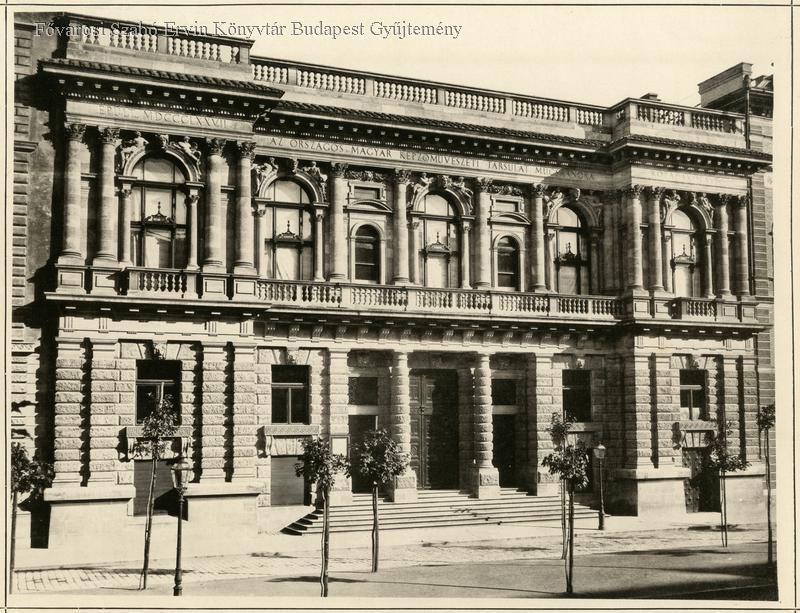
The Kunsthalle building (today's the University of Fine Arts) is on Andrássy Avenue. It was designed by Adolf Láng at the initiative of the National Hungarian Fine Arts Society. Ligeti's works were also exhibited between these walls (Source: FSZEK Budapest Collection)
As a member of the Fine Arts Society, he advocated for a building to be built for the society's exhibitions. The exhibitions of the society founded in 1863 were initially held in the Academy building, but after a while, the space proved to be too small. They soon realised that to achieve the institution's goals, which were to present and promote the works of Hungarian artists, they needed an independent building. Based on the plans of Adolf Láng, the Kunsthalle (today's University of Fine Arts) was finally built for the company at 69 Andrássy Avenue in 1877.
During his lifetime, several of his works were exhibited within the walls of the building, as he regularly participated in the exhibitions of the Kunsthalle, but after Ligeti's death, the memorial exhibition featuring his works was also held here in 1890. The exhibition opened on 22 February with 435 works, most of which were purchased. The society earmarked the amount received for the preparation of Ligeti's tombstone.
The tombstone of Antal Ligeti in the issue of Uj Idők published on 14 November 1897. Gyula Donáth won the tender
Ligeti died on 5 January 1890 in Pest. He was laid to rest in the Fiumei Road Cemetery. In 1892, the Fine Arts Society issued a tender for the design of his tomb, the winner of which was Gyula Donáth. The work was unveiled on 1 November 1897. Uj Idők wrote about the inaugurated monument a few days later on 14 November 1897.
"This work of Donáth's is also touching and exudes the quiet, heart-wrenching atmosphere of passing and mourning. The genius carved from grey marble dejectedly holds the laurel wreath with which Hungarian art crowned Ligeti's memory."
In addition to the Hungarian Academy of Sciences and the Hungarian National Gallery, Antal Ligeti's works are also preserved in rural and foreign museums and private collections.
Cover photo: Antal Ligeti: Buda and Pest Skyline From Ferencváros, 1866 (Source: György Rózsa: The Most Beautiful Skylines of Budapest, 1995.)

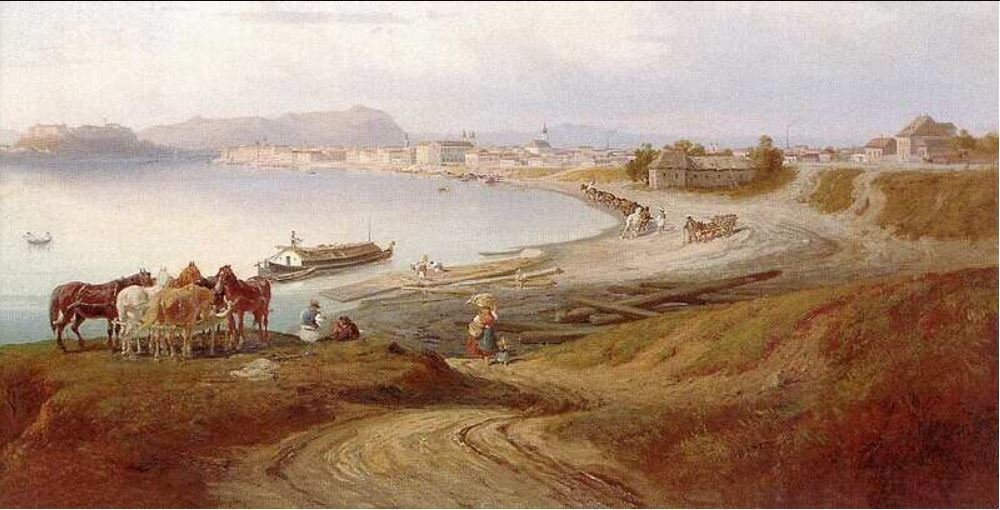
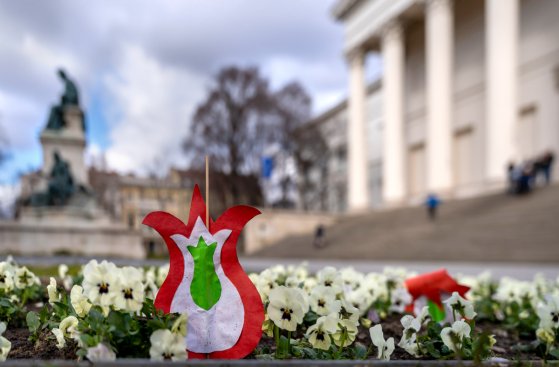
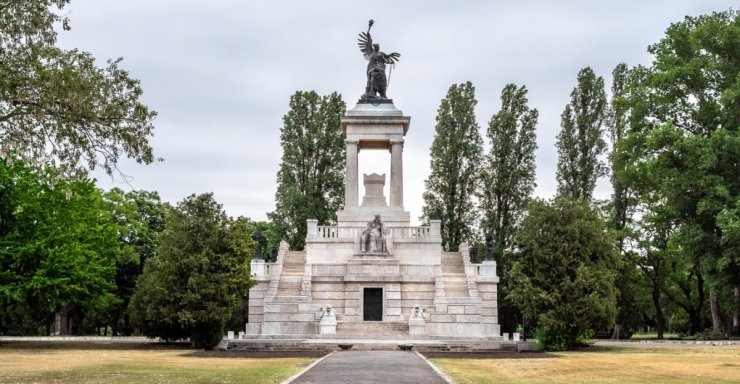

































Hozzászólások
Log in or register to comment!
Login Registration